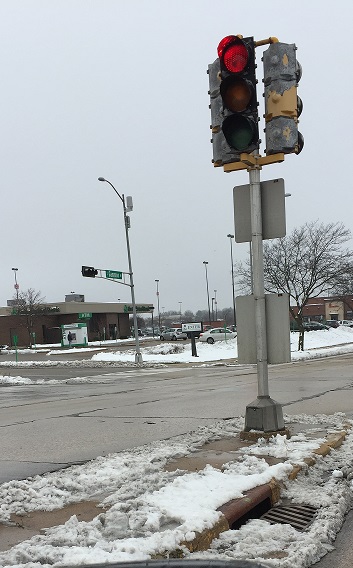






A bricklayer by trade, John works as a construction worker during the summer months. Once winter sets in, construction work becomes scarce.
John said he has applied for numerous jobs in retail and food service, but because of a felony record for blue collar crimes, no driver’s license and no transportation, no company has hired him. So in the winter John panhandles.
Panhandling is defined as the act of begging, but John does not identify himself as a “beggar” or a “panhandler.” John prefers to think of panhandling as his most promising opportunity to receive income.
John is 29 years old and has requested that his real name not be used in the article. He expressed worries that his opinions would cause backlash on him in the homeless community. He speaks about the issues that people who are homeless face when asking for money on street corners, intersections or sidewalks and gives his opinion on whether or not to donate to people who are homeless.
Based on the latest Annual Report on Homeless Persons Served in Dane County, about 1,304 single men were served by shelter programs in Dane County in 2013. Nineteen percent reported no income.
That amounts to about 248 single men with no income. Of these single men, some may choose to “panhandle” as a means of income, and according to John some even think of it as a job.

“I know some people who wake up at five or six o’clock in the morning and by seven are at their spot every day. It’s a routine; it gives people a sense of accomplishment,” John said, adding that for a “shift” of roughly eight hours a person might receive anywhere from nothing to $100 in donations.
John said he spends what money he collects on what he views as his priorities, which he describes as a series of questions that he asks himself.
“Do I have shelter or room paid for, for the day? If so, then I don’t have to worry about that. Do I got food paid for, for the day? If I do, then I don’t have to worry about that,” John said, adding that usually the money he receives from one shift of panhandling will last him about two to three days.
If the situations were reversed and John was in a position to give to people who are homeless he said he would, regardless if the person had a possible substance abuse problem. He also added that he doesn’t think it should matter where the money he donated might be going.
“It’s gonna be 100 percent up to that person what they decided to do at the end of the day with any money generated or donated to them, but if I was to help them out today it’s hopefully not going to go 100 percent to a substance,” John said.
Molly Leimontas, rapid rehousing case manager at the Salvation Army, echoed some of what John proposed.
“I believe that giving, if you can, if you’re economically able, and you want to, it shouldn’t be out of guilt. It should just be out of empathy. Empathy to know that we’re all part of the human condition and that we all suffer from time to time. I don’t think it’s anybody’s choice to be out there,” Leimontas said.
Leimontas adds that when at an intersection with nothing on-hand to give, a simple smile will suffice.
“Instead of this guilty like I need to look away because I don’t want to give them money, just smile and wave. Just treat them with kindness even if you don’t want to give them money because what you’re really doing is understanding the human condition and treating them with respect and dignity,” Leimontas said.
As an employee of the Salvation Army Leimontas said she often will provide resources to those she encounters who need help.
“I’ll provide resources like the Dane County Housing Resource Line which is 855-510-2323 or United Way, 211, and that’s the quickest stuff I can give without the light turning a different color,” Leimontas said.
The director of Wisconsin Coalition Against Homelessness, Joseph Volk, suggested making a case-by-case decision on whether or not to give.
“I think the answer is not, quite frankly, to say either ‘yes, do it’ or ‘no, don’t do it.’ I think that you take each circumstance as it comes and you judge each time whether or not the person that is approaching you is really in need or not,” Volk said.
Volk also said he advises people who are homeless and in need of resources to call 211, a number that when dialed provides access to Dane County Health and Human Services.
In the future, John hopes to avoid panhandling all together.
“I’d love to be stable; I’d love to have a home. A lot of people take it for granted, being able to sit down and eat in the kitchen or sit back and turn on the news,” he said. “I’ll go to sleep tonight in my spot which is underneath a bridge by myself, and it’s going to be cold and it’s going to be lonely.”
|
|
|
Welcome to the Madison Commons, a website designed to provide news and information about all of Madison's neighborhoods and a crossroads for the discussion of community issues. The name comes from the idea of a village commons, a place for news, talk, debate, and some entertainment, too, that's open to everyone.
All rights reserved. Read more about the Madison Commons and its partners.

